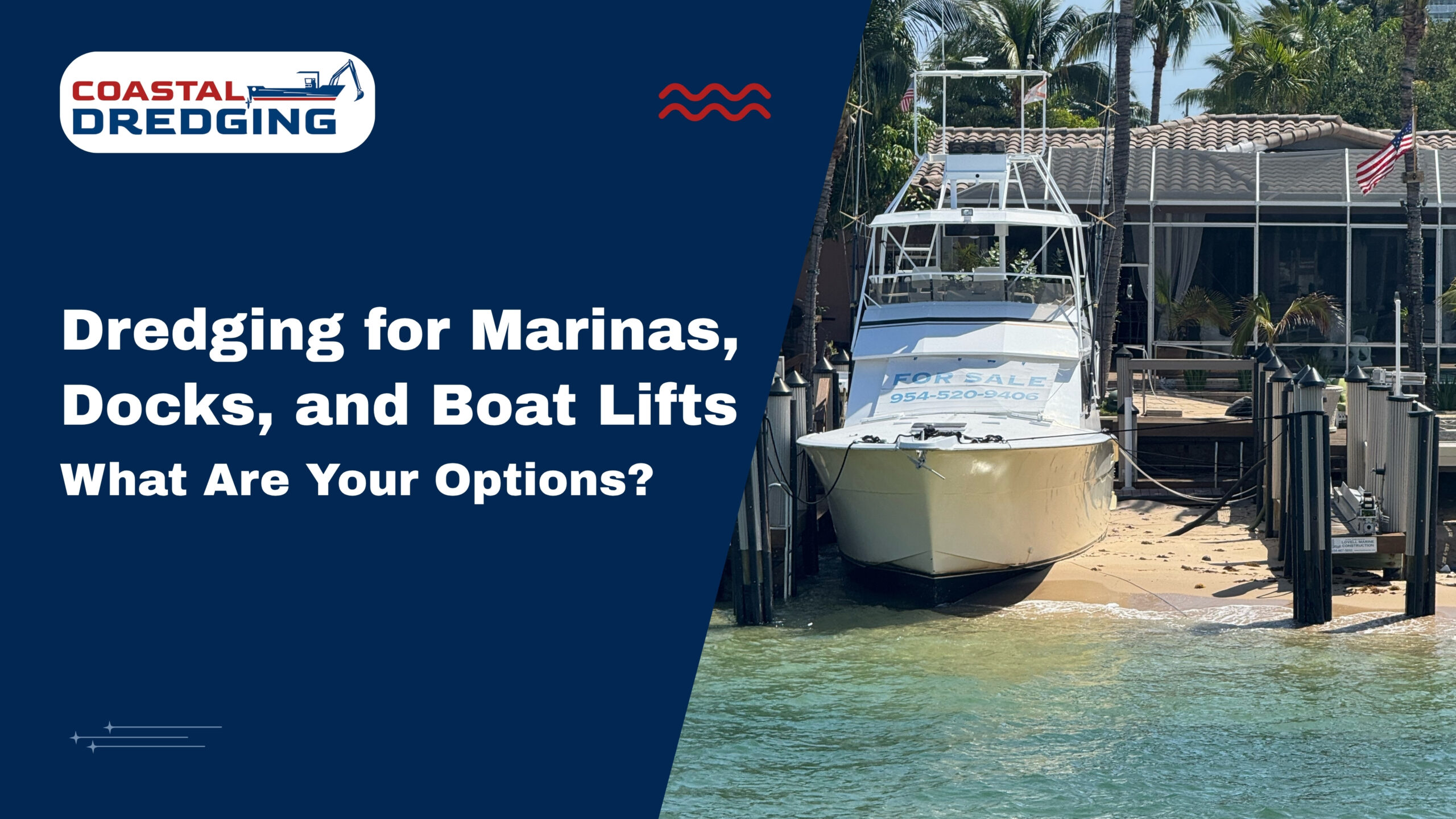
Boating should not involve stress or difficulty. Yet, if the water becomes very shallow, it starts to cause issues. With time, sand, mud, and other debris collect around marinas, docks, and boat lifts. As a result, boats may not be able to move, and the lifts will stop. That’s how dredging helps—by cleaning out the buildup and making the area better for navigation.
Dredging means taking out the sediment that has settled on the bottom of a lake, river, harbor, or similar water areas. It supports a safe depth of water for boats and allows all docks and boat lifts to function properly.
As more sediment collects, it can affect how you use the area and cause equipment to become damaged. Because of dredging, waterways don’t have obstacles, so they remain functional, safe, and available for many types of activities.
If it’s challenging to use your dock or lift, you might have to consider marine dredging. Signs include:
Every boat requires a safe depth at the marina. If boats aren’t dredged, they could be damaged. Sometimes, your dock won’t function properly at all during low tides.
There is more than one technique you can use to dredge. Which option is best for you will depend on your location, how much money you have, and the size of your project.
Machines such as backhoes, cranes, and clamshell buckets are needed for this task. Mud is soaked up by either a barge or an excavator and loaded into a container or truck. Such a boat is appropriate in confined and narrow marinas.
Pros:
Cons:
This uses pumps and long hoses. It sucks up mud and water like a vacuum. The mix goes to a nearby settling area or tank. The water drains, and the solids are removed.
Pros:
Cons:
This is a smaller form of hydraulic dredging. It uses water jets to loosen mud. Then a suction hose pulls it out. Often used in tight or shallow spots.
Pros:
Cons:
Marina dredging keeps waterways clear, safe, and accessible. It removes sediment, improves depth, and enhances boat movement and dock usability.
Dock dredging clears built-up sediment around docks. It maintains safe water levels and allows smooth boat docking. Perfect for waterfront homes needing improved access and functionality.
This service clears sediment under boat lifts. It ensures lifts operate smoothly and safely. No more grounding or access issues near your boat lifts.
Marina dredging keeps slips and channels open. It removes debris and silt that block access. Ensures full marina operations without interruption or safety risks.
Boat lift dredging deal for freshwater homes, this dredging can clear canals and lift areas. It maintains depth, prevents erosion, and ensures boats move safely near private docks.
The cost of dredging can vary widely. It depends on how much material needs to be removed, machine access, and where the sediment is disposed of. Local permits and environmental rules also affect pricing.
Small residential dredging projects typically cost between $10,000 and $30,000. Larger commercial or marina jobs can go much higher. Planning is key. The best time to dredge is during low-traffic seasons, like fall or early spring. This avoids disruptions and protects wildlife.
Many areas restrict dredging during fish spawning or bird nesting seasons, so always check local regulations before starting. Proper timing and permits can save time and money.
You can’t dump mud anywhere. It must be placed in an approved site. Options include:
Some marinas partner with farms or cities to reuse dredged sand and soil.
Shallow water can ruin your boating experience, but the right dredging service can fix it. Coastal Dredging offers safe, fast, and eco-friendly solutions to keep your docks, lifts, and marinas accessible all year round. Trust the experts who know Florida’s waterways best.
Ready to reclaim your waterfront?
Book your free consultation with Coastal Dredging today! Call (561) 794-1114 or visit www.coastaldredgingco.com to schedule expert dredging services tailored to your property. Don’t wait—restore safe, smooth access to your waterway now!
The cost to dredge a marina depends on the size and depth. Small projects may cost $10,000 to $30,000. Larger marinas can cost over $100,000. Location, method, and disposal also affect price. Always get multiple quotes.
The three main types of dredging are mechanical dredging, hydraulic dredging, and suction (jetting) dredging. Each method removes sediment from the bottom but uses different tools like buckets, pumps, or hoses depending on the job’s needs.
Alternatives include floating docks, boat relocation, jet pumps, and sediment control systems. These may help delay dredging. However, they don’t remove sediment. They’re best for small or short-term fixes when full dredging isn’t an option.
Dredge alternatives include agitation dredging, jet pumps, eco-docks, and erosion prevention. These methods reduce the buildup or shift sediment away. Some involve changing the dock design. Others manage water flow to avoid heavy sediment settling.
Non-dredge methods use water movement or dock design instead of removing mud. This includes jetting, sediment stirring, or using floating docks. These methods work best in light sediment areas and may not replace dredging for deep buildup.